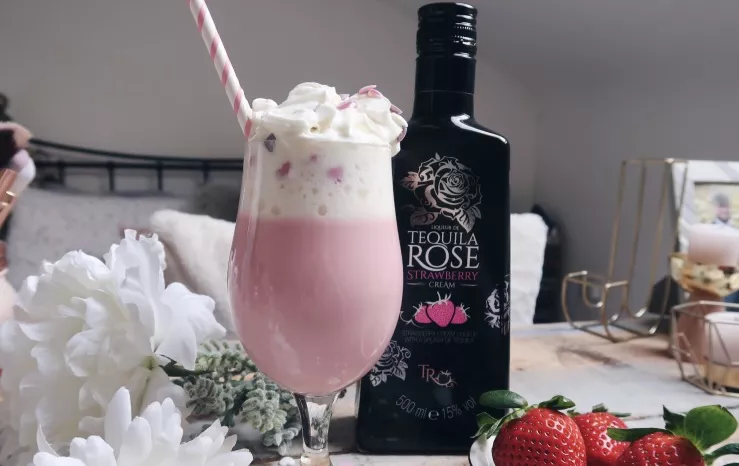Fruit cocktails, with their vibrant colors and refreshing flavors, are a staple on many menus and dining tables. Whether served at a summer picnic or a formal event, these delightful concoctions often feature an array of colorful fruits suspended in a sweet, flavorful liquid. Amidst the medley of fruits, there’s often one element that catches the eye and piques curiosity—the mysterious red stuff. But what exactly is this crimson addition to fruit cocktails, and why is it there?
Exploring the Origins of the Red Stuff
What’s the red stuff in fruit cocktails? To answer this question, it’s essential to delve into the origins of fruit cocktails themselves. The practice of combining various fruits in a single dish or drink dates back centuries, with evidence of fruit salads appearing in ancient Roman and Persian cultures. However, the modern fruit cocktail, as we know it today, gained popularity in the late 19th and early 20th centuries, particularly in Western countries.
During this time, culinary trends emphasized the use of canned and preserved foods, making fruit cocktails a convenient and accessible option for households. Canned fruits, often preserved in syrup for added sweetness and shelf life, became a common ingredient in these cocktails. It was in these syrup solutions that the red stuff found its genesis.
Unraveling the Mystery Ingredient: Maraschino Cherries
At the heart of many fruit cocktails lies a tiny, yet significant ingredient—the maraschino cherry. These bright red cherries, typically made from a special variety called the Marasca cherry, undergo a unique preservation process that gives them their distinctive color and flavor.
Originally hailing from the Adriatic region, Marasca cherries were soaked in a liqueur called maraschino—a clear, cherry-flavored spirit—during the preservation process. Over time, the popularity of these cherries spread, and variations of the preservation method emerged, often involving a combination of sugar, flavorings, and food coloring to achieve the vibrant red hue we associate with maraschino cherries today.
The Role of Maraschino Cherries in Fruit Cocktails
So, what’s the red stuff in fruit cocktails? In many cases, it’s the beloved maraschino cherry. Beyond its visual appeal, the maraschino cherry serves several important functions in fruit cocktails. Firstly, it adds a burst of color that enhances the overall presentation of the dish. Whether nestled atop a towering parfait or nestled among slices of tropical fruit, the bright red cherry serves as a focal point that draws the eye and entices the palate.
Furthermore, maraschino cherries contribute a distinct sweetness and flavor profile to fruit cocktails. Their syrupy texture and rich, cherry taste complement the natural flavors of other fruits, adding depth and complexity to the overall flavor profile of the cocktail. Whether enjoyed on its own or paired with other fruits, the maraschino cherry plays a crucial role in balancing the sweetness and acidity of the cocktail, resulting in a harmonious blend of flavors.
See Also: cocktails with indian food
Evolution of Alternatives: Red Dye and Natural Substitutes
While traditional maraschino cherries remain a popular choice for fruit cocktails, the rise of health-conscious consumers and the demand for natural ingredients have prompted the development of alternative options. In response to concerns about artificial dyes and preservatives, many manufacturers now offer maraschino cherries made with natural food coloring and flavorings.
Additionally, some cocktail enthusiasts have turned to homemade alternatives, opting to infuse fresh cherries with natural ingredients such as vanilla, almond extract, or citrus zest to create their own version of the classic cocktail garnish. These homemade cherries not only offer a more wholesome alternative to store-bought varieties but also allow for greater customization and experimentation with flavor profiles.
In addition to natural alternatives, some fruit cocktail recipes eschew maraschino cherries altogether in favor of other red fruits or ingredients. Raspberries, strawberries, and pomegranate seeds are popular choices for adding a splash of red to fruit cocktails, offering vibrant color and fresh, fruity flavors without the added sweetness of maraschino cherries.
Cultural Significance and Symbolism
Beyond their culinary utility, maraschino cherries hold cultural significance and symbolism in various contexts. In American culture, for example, maraschino cherries are often associated with celebratory occasions such as birthdays, weddings, and holidays. Their bright red color and sweet flavor make them a festive addition to cocktails, desserts, and party platters, symbolizing joy, indulgence, and abundance.
In Japanese culture, maraschino cherries are commonly used as a garnish for traditional cocktails such as the Shirley Temple and the Singapore Sling. However, their significance extends beyond mere decoration; in Japan, maraschino cherries are associated with good fortune and prosperity, making them a popular choice for celebratory events and special occasions.
In Conclusion: A Splash of Red in Every Sip
What’s the red stuff in fruit cocktails? Whether it’s the iconic maraschino cherry or a natural alternative, the crimson hue adds visual appeal, sweetness, and flavor to these beloved beverages. From its humble origins in preserved cherries to its cultural significance as a symbol of celebration and good fortune, the red stuff in fruit cocktails has captured the imagination of food enthusiasts and cocktail connoisseurs alike.
As culinary trends continue to evolve and consumers demand more transparency and quality in their ingredients, the future of fruit cocktails remains bright—and undeniably red. So, the next time you indulge in a refreshing fruit cocktail, take a moment to appreciate the tiny, yet essential, contribution of the red stuff that elevates every sip to a delightful experience for the senses.


